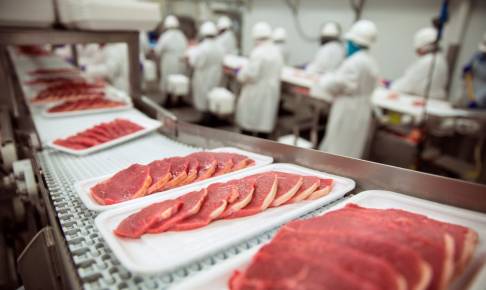European-Funded FoodIntegrity Project: assuring quality and authenticity in the food chain
The FoodIntegrity “Ensuring the Integrity of the European Food Chain” program was a successful €12 million European Commission 7th Framework Programme for Research and Technical Development (FP7) research project that ran from 2014 to 2018, spanning both the FP7 and the Horizon 2020 programmes. Comprising 60 participants from Europe, China, and South America, it produced a range of cutting-edge research, solutions, strategies, and processes to improve the food chain.
FoodIntegrity has been hugely successful in reaching stakeholders and involving them in co-designing research and solutions through a multi-actor co-creation approach. Gaps and new research needs along with priority topics for funding and commissioning were identified through a series of co-creation workshops and questionnaires, ensuring that newly commissioned research met actual needs and that funding bodies were provided with priorities for future funding.
Stakeholder engagement was further enhanced using a novel multi-tiered communication and dissemination plan that employed a range of media and tools to reach stakeholders, including a FoodIntegrity YouTube channel, videos, infographics, a dedicated FoodIntegrity networking resource, social media, and an international forum with more than 1400 stakeholders from over 40 countries participating. FoodIntegrity members had input into all transnational standards related to countering food fraud (i.e. CEN, ISO, GFSI, BRC, Codex) through a series of consultative workshops and meetings to design industry standards and best practices.
FoodIntegrity made available a comprehensive inventory of existing analytical solutions (Figure 1).
Figure 1: Example of infographic illustrating: (a) a rapid screening strategy and (b) a confirmatory analytical strategy developed within the FoodIntegrity project/framework.
Rapid detection tools were developed to fit stakeholder’s screening needs, and successful solutions were developed to address wheat adulteration, tomato and fish authenticity, egg freshness, etc. Parallel confirmatory analytical approaches were established to address accurate findings and possible legal requirements related to meat speciation, protected designation of origin (PDO) cheeses, and tomato or wheat origins, for example.
Chemical and microbiological marker classification schemes were developed for many combinations of raw materials and finished products based on the type of risk and they are now available for industrial exploitation. An early warning system (EWS) was established as a predictive detection system with a traffic light dashboard for each commodity, country identifiers, summary statistics (covering more than 190 countries), automated historical trading patterns, seasonality information, and long-term trends of triggers (e.g. prices and quantities). Scientific food opinions were made available as points of reference for forensic needs.
A FoodIntegrity Knowledge Base that maps and categorizes analytical methods is now available as a resource for stakeholders and will be maintained through the European Commission Joint Research Centre in the future.
A freely downloadable FoodIntegrity Handbook was also published for all the stakeholders as a si
Download content now





















